Reusing condenser dryer water is an excellent way to conserve water. Whether you live in a drought-stricken area, in a place where water shortages are common, or you just want to help the planet, it’s something you won’t regret looking into!
Below, I have outlined 8 uses for condenser dryer water that are both functional and good for the planet.

The following are uses for condenser dryer water that are both functional and good for the planet:
- Water plants
- Mop floors
- Washing outside furniture
- Use in the washing machine
- Flushing the toilet
- Washing carpets
- Cleaning bathroom surfaces
- Washing garbage cans
1. Watering (Some) Plants
What Is in Dryer Water?
The exact concoction that makes up dryer water depends on the type, model, and age of your dryer, as well as the detergents used on your clothes during washing.
Unlike other dryers, condenser dryers collect the water removed from drying clothes. As the water condenses, it collects at the bottom of the dryer to be expelled (manually or through a drainpipe). Most detergents may still be present in the water collected as well as pieces of lint that accumulate over time.
If you use a fabric conditioner, its concentration is usually much higher than the concentration of a detergent. There is a chance of residue build-up, which can end up in dryer water.
Dust particles and lint can also collect in the dryer water. Regular cleaning of the collection tank can help to reduce the number of particulates in the water but it cannot prevent them entirely.
Dryer water also isn’t the most nutritious version of water for plant consumption. Normal water contains important minerals like calcium, magnesium, and potassium, on which plants thrive. However, dryer water becomes roughly distilled through evaporation and subsequent condensation making it free of minerals and more acidic.
Your condenser dryer water can be used to water some of your plants. I say “some”, because the water that comes from your dryer is acidic from the detergent and the water vapor created during the drying process, so there are several plants this water is not suitable for.
Plants You Shouldn’t Water With Dryer Water
I suggest not using this water for any potted plants. The reason is that the acidic water would be entirely concentrated in the pot instead of spreading as it would in the soil of a garden. This would most likely result in the water killing your precious potted plants.
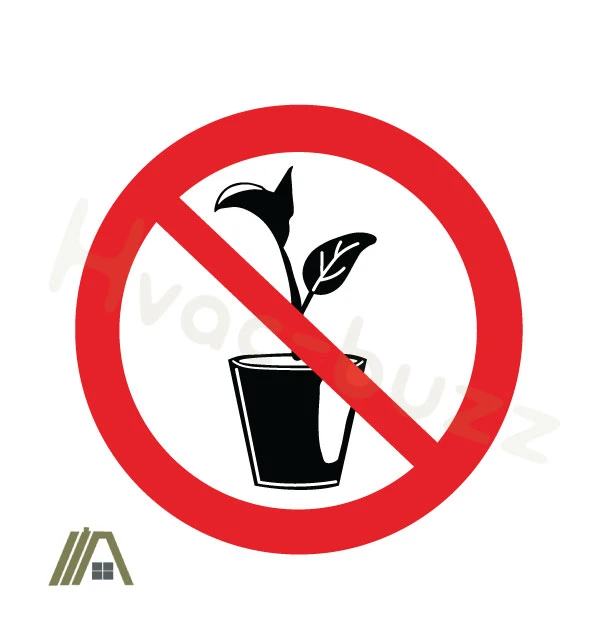
Furthermore, the minerals in water are good for plants. The condensing process in the dryer removes most of these minerals. So, potted plants, who have limited access to soil minerals and alternative water sources, could “starve” on condenser dryer water alone.
Also, avoid watering any edible plants, such as fruits and vegetables that you proudly grow, with this water. Dryer water is not suitable for human consumption. Watering plants you intend to eat with dryer water might affect the plants’ growth as well as your health.
If you want to maximize the growth of your newly sprouting plants and seedlings, then stick to watering them with fresh water only. The acidic dryer water might kill them as they are not yet matured enough to withstand the change in acidity and the contaminants in the water.
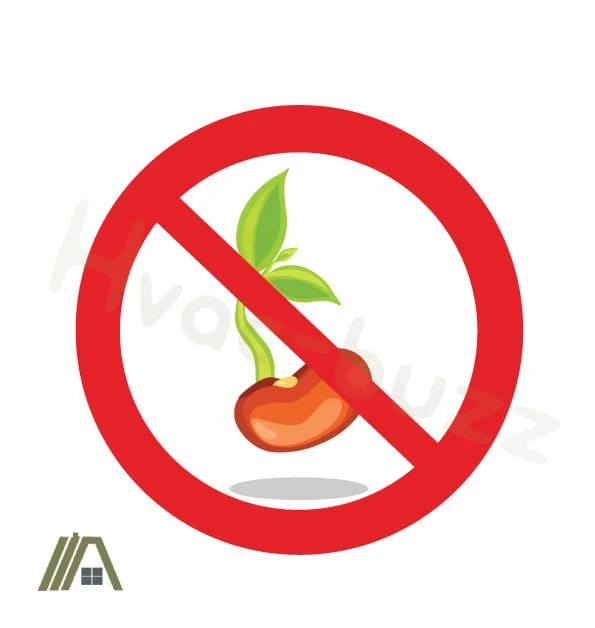
You cannot use this water to water plants that need alkaline soil in order to thrive. Such plants include lavender, Boston Ivy, and certain flowering shrubs.
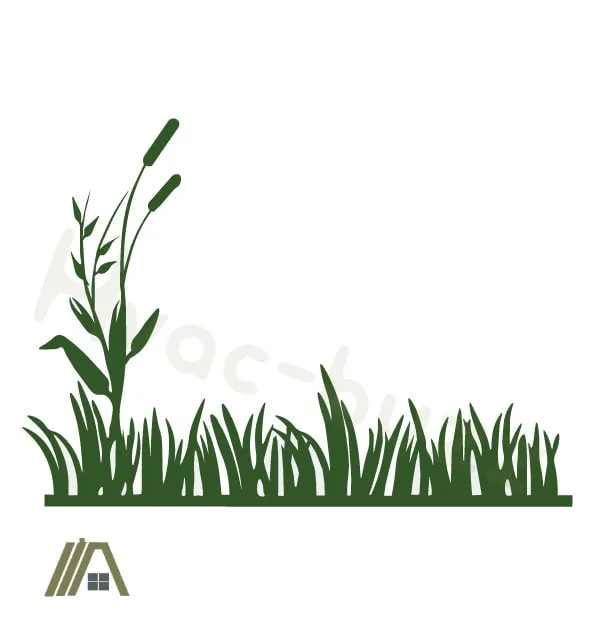
Plants You Can Water With Dryer Water
You can still use your dryer water to water your grass or plants that are directly planted in open soil since there is enough surface area for the water to spread, and there is rain that can provide these plants with necessary nutrition that is not present in condenser water.
Notably hardy plants and established plants should also be fine when watered with dryer water.
2. Mopping the Floors
Another great way to utilize the dryer water is to mop your floors with it.
There is no reason to worry about any excess detergent in the water as you will be adding other kinds of cleaning products to clean the floor regardless.
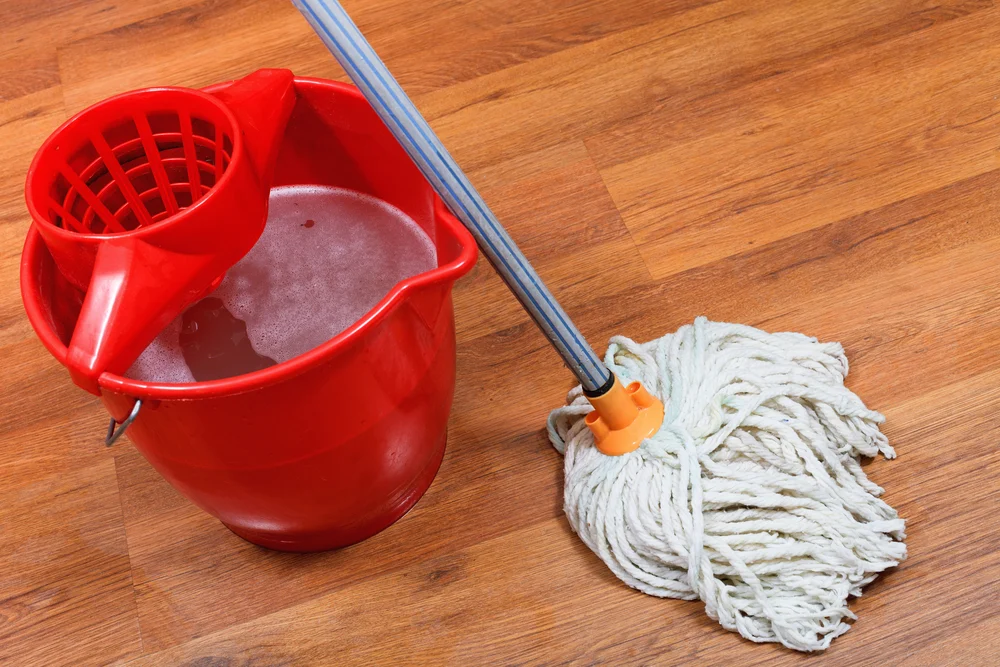
Sometimes the condenser dryer water can have some lint in it, which might appear on the floor while you are mopping it.
To avoid this but still reuse the water, you can simply filter it before using it. A filter paper (amazon link) or a fine-mesh sieve (amazon link) should do the trick. The filtered water will still contain whatever detergent or fabric softener it did before, but you won’t have to sweep any lint away afterward.
3. Washing Outside Furniture
You can also use your condenser dryer water to clean your outside patio furniture. Outside furniture is usually made of durable materials such as steel, other metals, or plastic. This means the residual detergent left in the water won’t cause any damage to it.
You probably won’t even need to add cleaning detergent to the bucket, as simply wiping down your furniture with the used water should get rid of any accumulated dust and dirt.
4. Use It in the Washing Machine
It might sound counter-productive, but a great way to reuse your dryer water instead of draining it outside is to put it to use in the washing machine.
Not as rinse water, it is better off used as wash water. This way, your washing machine will be using less fresh water.
The washing machine will then use fresh water during the rinse cycle, and your clothes will be as clean as usual.
Now, to make this work is no easy task. But it is not impossible, and those committed to water conservation won’t mind putting in some extra effort. It’s much easier (but still not the easiest thing in the world) with a top-loader.
Some combined washer-dryer machines do have a setting for this (just consult your manual or contact the product provider). Otherwise, you can get in an experienced plumber to do the job for you as it involves moving some pipes here and there.
5. Flushing the Toilet
Another way to utilize the dryer water is to use it to flush your toilet. Simply drain the dryer water into a bucket or two and store it next to the toilet.
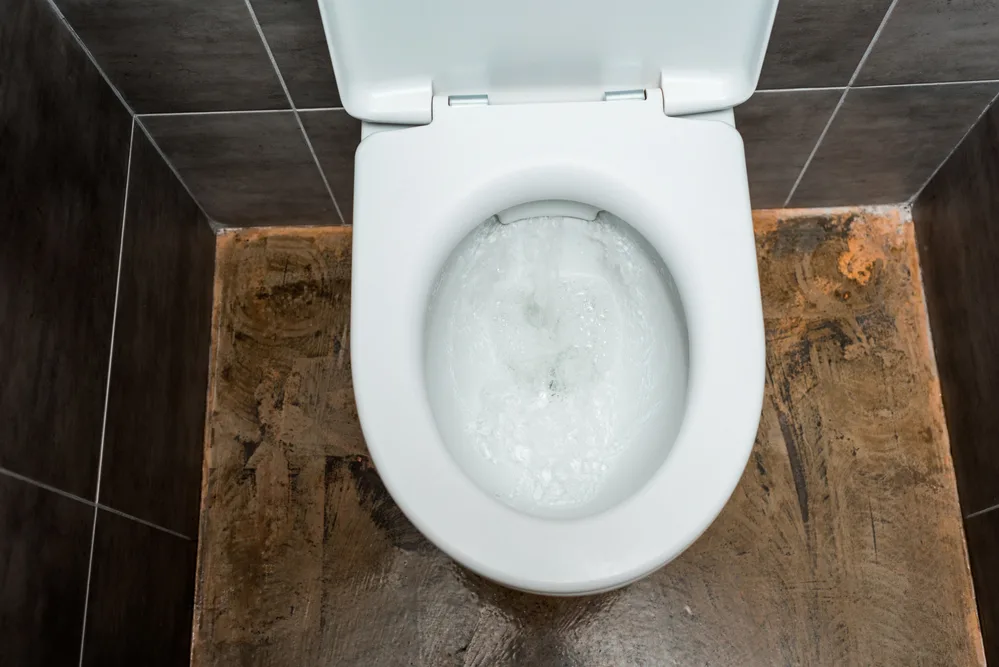
Once someone has used the toilet, they have two options. They can either pour the water directly into the cistern and then simply flush the toilet as normal or they can pour it into the toilet bowl.
Pouring it into the cistern is a great way to save water, but some cisterns can be quite tricky to open and heavy to lift.
In addition, you need to turn off the water supply to your toilet. Otherwise, your cistern will fill automatically, which would completely defeat the point.
However, you should keep an eye on the cistern and ensure there is water in it at all times. If not, then the p-trap could become dry, and you don’t want that!
The alternative, pouring the bucket of water directly into the toilet bowl, should be done slowly enough to avoid spilling all over your floor (but hey, if you do, refer back to tip 2!) but fast enough to get the right pressure to push the water down.
Yes, this seems like quite the schlep, but if you really want to make a change, you need to put in the effort.
6. Washing Carpets
Carpets are typically hardy. After all, they are subjected to foot traffic, pets, spills, moving furniture, etc., so a little dryer water is not likely to fray or deteriorate the material.
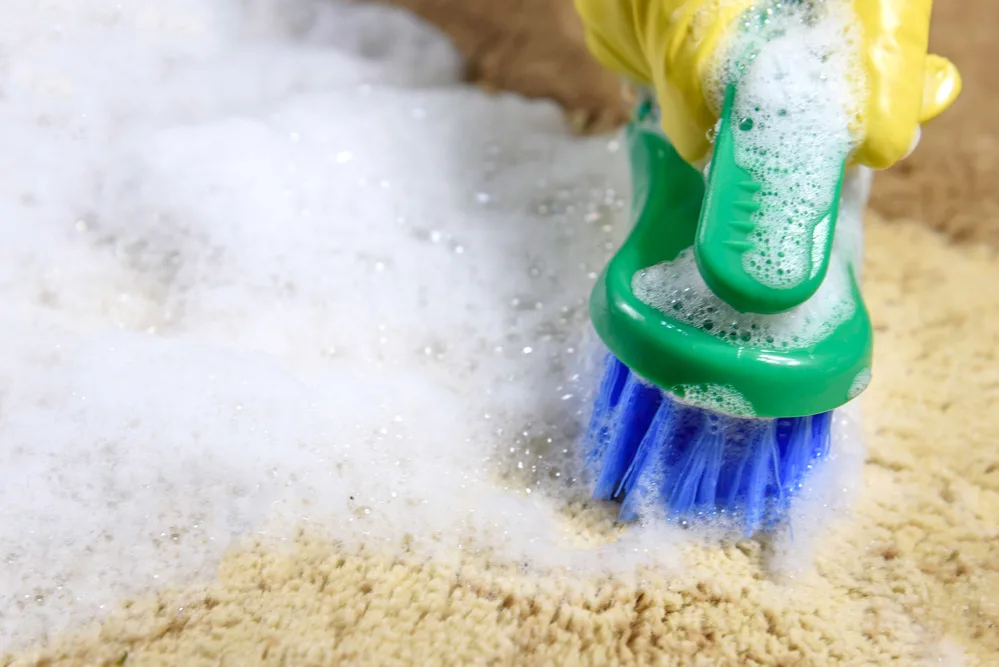
Any chemicals in the water from laundry soap or fabric softener will be negligible compared to what you would be adding to clean the carpets.
Of course, just like with washing your floors, remove any lint through filtration to avoid having lint speckling your carpet—which is a nightmare to remove.
7. Cleaning Bath, Shower, Sink, and Toilet
A bathroom and its amenities are a high-traffic zone in any home.
When you clean the bathroom, your aim is to kill of bacteria and any molds that are trying to take hold. To achieve this, you typically add quite strong cleaning products to the water.
So, having fresh water for the washing is not a priority; it just has to be clean, which dryer water will be if you keep your collection tank clean.
The lint might stick and make them look dusty. If this turns out to be a problem, let the water dry and then wipe the surfaces with a microfiber cloth (amazon link).
As a side note, microfiber cloths have changed my life when it comes to dusting. Seriously, the link above is to a 12-pack, and I think it’s absolutely worthwhile getting this many. I use the different colors to keep uses clear.
8. Washing out Garbage Cans
Ah, cleaning the garbage cans. A chore that nobody likes to do, but one that is vital in order to reduce odors and maintain overall hygiene.
Garbage cans are typically full of germs and bacteria, so simply rinsing them out with water every once in a while will not clean them efficiently.
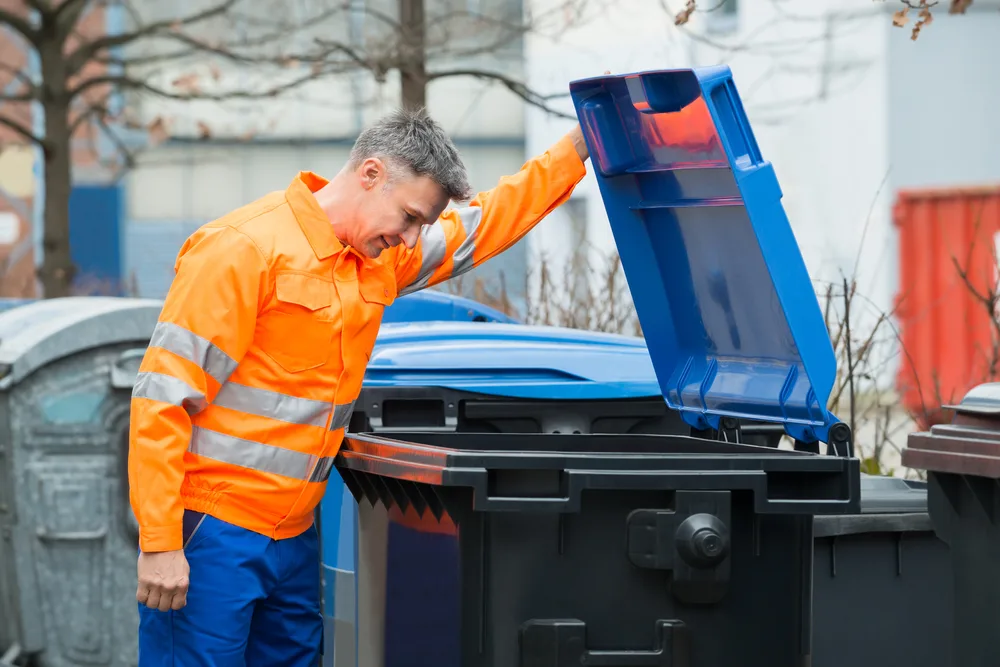
Get into the habit of collecting the dryer water in a bucket and washing your garbage can at least once a week (you will need to use a good soap or cleaning product with the dryer water!).
A bit of lint on a garbage can is not going to be problematic, so there’s no need to filter the water beforehand.
What About Use in Irons?
When I first started researching alternative uses for dryer water, one of the first things that cropped up was use in irons. Not all sources were in favor of the practice, but others said it was a brilliant solution to their steam iron problems.
I have not included this use in my list because there is too much conflicting information. You can read about the arguments for and against in Using Tumble Dryer Water in an Iron: Foolish or Genius?
Sources
https://easypeasygreeny.co.uk/2020/10/12/reusing-water/
https://www.thespruce.com/soil-and-plants-that-dont-mind-alkalinity-2131000
